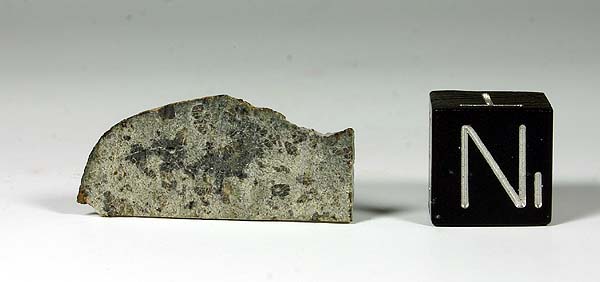
Muscat: When NASA’s Perseverance Rover touched down on Mars recently, it was bringing with it a passenger that called the Red Planet home.
A meteorite that contained Martian soil and rocks, which had fallen on Earth some 450 million years ago, had been previously discovered in the Wusta region of Oman, and was sent back to Mars on the Rover.
The returning of the meteorite, titled Sayh Al Uhaymir 008, is actually a world’s first in terms of sending objects from space back to their planet of origin.
“After detailed examination of the meteorite at the Max Planck Institute in Germany, researchers found evidence that the rock Sayh Al Uhaymir originally belonged to Mars,” said a statement from NASA.
“The meteorite fragment weighs more than eight kilograms. It is estimated to have reached Earth 450 million years ago, due to a cosmic development involving the collision of an asteroid or comet with the planet Mars.
“The meteorite fragment found in the Sultanate was preserved at the Natural History Museum in London, which includes interesting and diverse meteorites from different countries of the world,” added the space agency.
When working on the Perseverance project, scientists suggested using a Martian meteorite found on Earth to help in processing images captured by the rover into their true colours and textures, without being affected by any existing natural conditions on Mars.
It was also decided that the Martian meteorite would act as a direct frame of reference for pictures of the Martian landscape, instead of the usual piece of metal or objects painted specific colours, which are normally used for such missions.
“Research centres around the world are always interested in studying meteorites, this is because they are closely related to space science, astronomy, and earth sciences,” said Dr Saud bin Humaid Al Shuaili, head of the National Space Programme Management Team at the Ministry of Transport, Communications and Information Technology.
“Therefore, the related research centres of the Sultanate should also have increased interest in these meteorites,” he added.
“Each meteor has a large amount of information about the solar system. It is a treasure of scientific information for astronomers and geologists.”
The return of the Martian meteorite to its home planet was discussed during the planning phase of the Perseverance rover, when scientists suggested placing a meteorite in the Rover to bring back to Mars. NASA encouraged people on Earth to not look at meteorites solely or primarily from the financial benefit they bring, which are sometimes negligible.
Instead, the space agency asked them to regard these as priceless sources of scientific knowledge: it helps solve the mysteries of how the solar system was created. Meteorites from Mars and the moon that are found in Oman are considered rare, and do play their part in attracting visitors to the museums where they are installed as exhibits.
“They must be taken care of and studied by local researchers at universities so that they can help contribute to scientific research and help us learn about the origins of our universe,” said Malik bin Mohammed Al Dohani, a member of the board of directors of the Oman Astronomical Society.